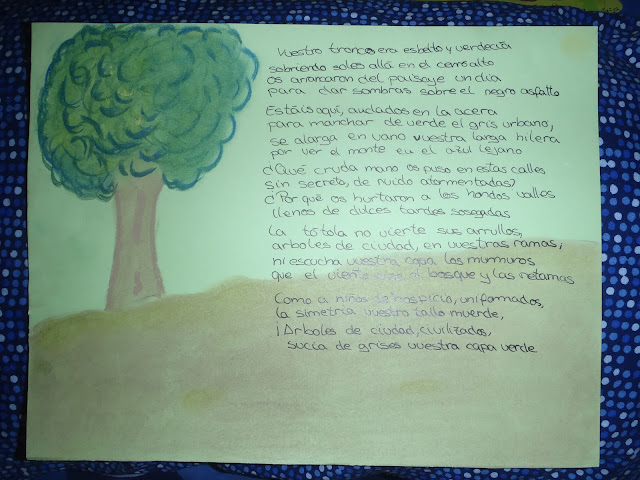También desde Polonia:
Populus is a genus of 25–35 species of deciduous flowering plants in the
family Salicaceae, native to most of the Northern Hemisphere. English names
variously applied to different species include poplar, aspen, and cottonwood.
Why do you always stand
there shivering
Between the white stream
and the road?
The people pass through
the dust
On bicycles, in carts, in
motor-cars;
The waggoners go by at
down;
The lovers walk on the
grass path at night.
Stir from your roots,
walk, poplar!
You are more beautiful
than they are.
I know that the white
wind loves you,
Is always kissing you and
turning up
The white lining of your
green petticoat.
The sky darts through you
like blue rain,
And the grey rain drips
on your flanks
And loves you.
And I have seen the moon
Slip his silver penny
into your pocket
As you straightened your
hair;
And the white mist
curling and hesitating
Like a bashful lover
about your knees.
I know you, poplar;
I have watched you since
I was ten.
But if you had a little
real love,
A little strength,
You would leave your
nonchalant idle lovers
And go walking down the
white road
Behind the waggoners.
There are beautiful
beeches down beyond the hill.
Will you always stand
there shivering?
Richard Aldington









.JPG)
.JPG)
.JPG)
.JPG)
.JPG)



.JPG)
.JPG)
.JPG)
.JPG)







.JPG)

.JPG)
.JPG)
.JPG)
.JPG)
.JPG)
.JPG)
.JPG)













